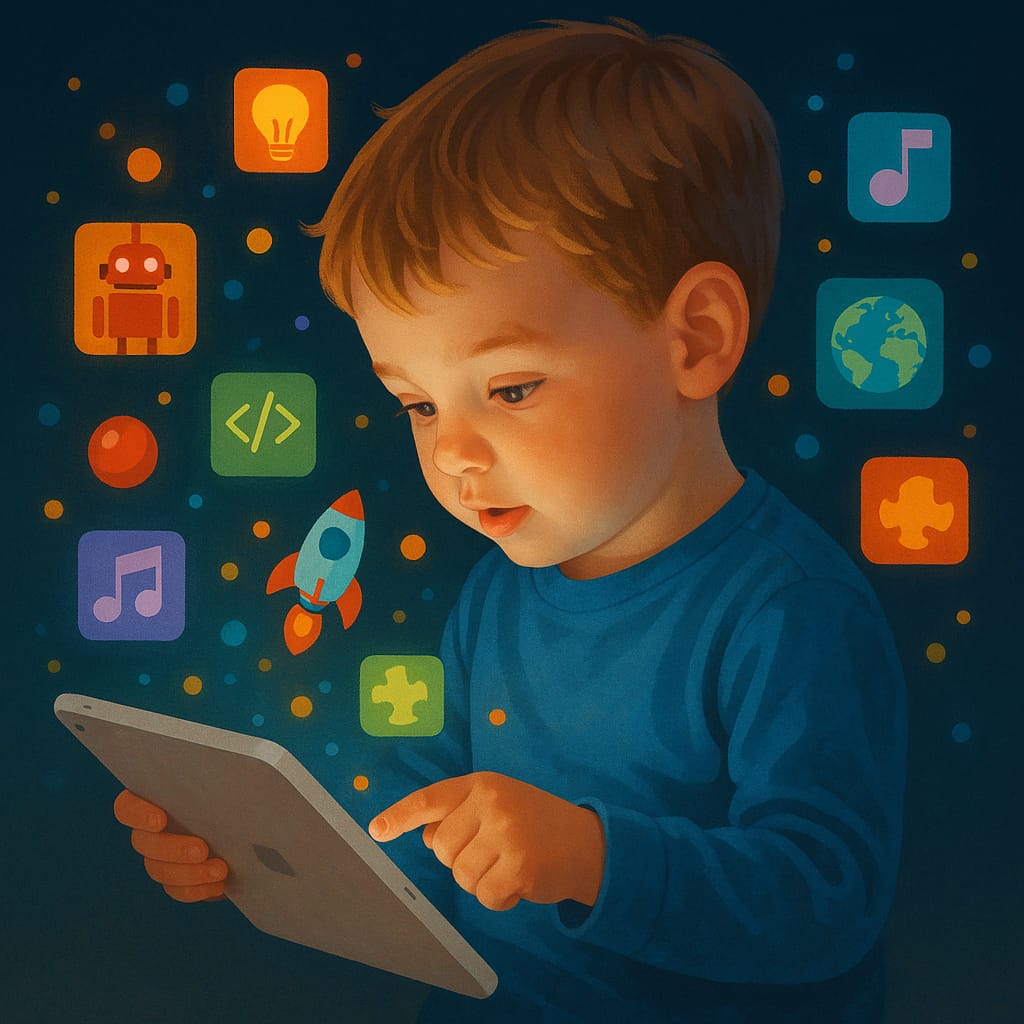Digital Childhood: How Mobile Phones and Social Media Are Rewiring Young Minds
May 15, 2025 | by priyanka Rathod

In a world where a toddler can swipe before they can walk and a child learns to say “YouTube” before “Maa,” we are witnessing the rise of a digital childhood—one unlike any generation before.
What once was a toy in a child’s hand is now a touchscreen. What once was family time is now interrupted by reels and notifications. The most formative years of childhood are now spent with eyes locked on bright screens and tiny fingers swiping endlessly.
But beneath the convenience and cuteness lies a disturbing question:
Are we shaping the future, or is the screen shaping our children?
1. Early Exposure: A New Normal
Walk into any restaurant, waiting room, or even a temple—you’ll find babies and toddlers silently watching cartoons on smartphones. Parents, often exhausted or busy, offer the phone as a digital pacifier. A few taps, and the child is still. Problem solved—temporarily.
But this early exposure comes with long-term consequences:
- Children as young as 6 months to 2 years are being exposed to screens, often well beyond the recommended limit (which is zero for kids under 2, as per the American Academy of Pediatrics).
- Instead of interacting with the real world, babies are interacting with pixels—reducing their sensory, motor, and emotional development.
- The brain, still developing rapidly, starts depending on overstimulation to stay engaged, leading to attention issues later.
2. Impact on Cognitive and Emotional Growth
A child’s brain is like wet cement—whatever impressions it gets early, stay for life. Constant exposure to mobile phones and social media leads to:
- Reduced attention span – Kids quickly get bored with reality because real-life stimulation can’t compete with the fast pace of cartoons or games.
- Impaired language development – Children who spend more time on screens talk later, and speak less, due to lack of interaction and conversation with people.
- Emotional regulation problems – Screens are used to distract or calm tantrums, so children don’t learn to self-soothe or manage emotions.
Over time, children may struggle with frustration, impatience, and anxiety, because they’re conditioned to expect instant rewards and entertainment.
3. Social Media: A Digital Jungle for Young Minds
Social media platforms like Instagram, YouTube Shorts, and TikTok are not designed for children, but they are increasingly being consumed by pre-teens and even younger kids.
- These platforms promote unrealistic beauty standards, materialism, and validation through likes and comments.
- Children may compare their lives to filtered lives of influencers and develop low self-esteem.
- Addiction to likes can distort their sense of self-worth and identity.
- Exposure to inappropriate content, cyberbullying, and unhealthy trends can affect their mental health.
What’s worse, algorithms feed them content that may not be age-appropriate, but is addictive.
4. The Decline of Play and Real-Life Interaction
Gone are the days of mud games, street cricket, and imaginary tea parties. Instead of inventing games with peers, children are consuming pre-made content. The result?
- Decreased creativity
- Weakened social skills
- Sedentary lifestyle leading to obesity
- Weakened eyesight, posture issues, and digital fatigue
The playground is shrinking. The screen is expanding.
5. What Can Parents and Society Do?
It’s not about banning technology—it’s about balance and conscious usage.
Here’s what we can do:
✅ Delay exposure: No screens under 2 years. Controlled, monitored exposure after that.
✅ Be role models: If parents are glued to screens, children will follow. Create tech-free zones and times at home.
✅ Encourage real play: Invest time in physical games, storytelling, and outdoor activities.
✅ Talk about digital literacy: As kids grow, teach them about online safety, fake information, and social media pressures.
✅ Use tech positively: Choose age-appropriate, educational apps that encourage interaction rather than passive consumption.
Conclusion: Shaping the Future
Children are not born addicted to screens—we hand them the addiction, wrapped in convenience. We must remember: technology is a tool, not a babysitter. If we don’t act now, we may raise a generation that can scroll fast but struggles to sit still, feel deeply, or think critically.
Let’s give our children more memories than megapixels. More love than likes. And a future that is healthy, balanced, and real.
Because childhood deserves to be lived, not swiped through.